UPSC Daily Current Affairs- 24th June 2024 | Current Affairs & Hindu Analysis: Daily, Weekly & Monthly PDF Download
GS3/Economy
Powers and Functions of GST Council
Source: Financial Express
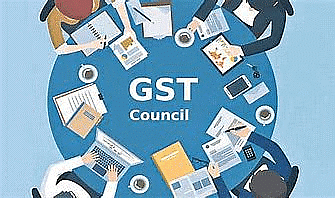
Why in news?
The 53rd meeting of the Goods and Services Tax (GST) Council took place in Delhi, chaired by Nirmala Sitharaman, Union Minister for Finance and Corporate Affairs, on June 22nd.
What is the GST Council?
The GST Council is a constitutional body established under Article 279A of the amended Constitution of India. It comprises the Union Finance Minister (as Chairperson), the Union Minister of State for Finance, and representatives from each state and Union Territory with legislatures.
Powers and Functions of the GST Council
- Recommendations on GST Issues: The Council advises the Union and State Governments on matters concerning the goods and services tax.
- Tax Rates: It decides on the rates of GST applicable to goods and services, including any modifications or exemptions.
- Dispute Resolution: Addresses disputes that may arise between the Union and States or among States regarding GST.
- Administrative Changes: The Council can recommend administrative changes to enhance the efficiency of GST implementation.
- Review and Revision: Periodically reviews GST rates and provisions to align with economic realities and policy objectives.
Evolution of the GST Council
- Formation and Initial Years: Established in 2016 after the passage of the 122nd Constitutional Amendment Act and began functioning in 2017.
- Operational Efficiency: The Council has evolved to streamline decision-making processes with real-time discussions and consensus-building among members.
- Expansion of Scope: The Council's scope expanded to include amendments to GST laws and procedural changes.
- Judicial Scrutiny: In 2022, the Supreme Court clarified that the Council's recommendations are not binding but reflect collaborative efforts between the Union and States.
- Adaptation to Challenges: The Council adapted to economic fluctuations, pandemic challenges, and evolving sectoral needs.
- Interstate Dynamics: The voting structure of the Council emphasizes its federal and cooperative nature.
Conclusion
The GST Council, pivotal since 2017, advises on GST matters, sets tax rates, resolves disputes, and evolves with economic shifts. Its federal structure ensures collaborative decision-making for efficient tax administration in India.
Main PYQ
Enumerate the indirect taxes which have been subsumed in the Goods and Services Tax (GST) in India. Also, comment on the revenue implications of the GST introduced in India since July 2017 (UPSC IAS/2019).
GS3/Defence & Security
Indian Railways and Safety Challenges
Source: The Hindu
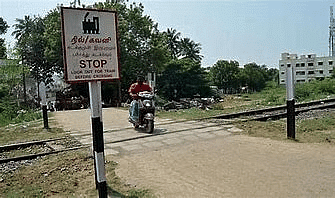
Why in news?
The turmoil has not subsided since the tragic accident involving the GFCJ container train, which, while travelling at high speed, collided with the 13174 Agartala-Sealdah Kanchanjunga Express, resulting in 11 deaths and approximately 40 injuries.
Indian Railways: Recent Issues
- Tragic Accident: The GFCJ container train collided with the 13174 Agartala-Sealdah Kanchanjunga Express, causing 11 deaths and around 40 injuries
- Premature Conclusions:
- The Chairperson of the Railway Board prematurely blamed the container train crew and provided incorrect information about casualties.
- Slow Rollout of Kavach System: Kavach, an indigenous signalling system to prevent collisions, has been slowly implemented due to limited industrial capacity.
- Staffing Issues: Indian Railways is overstaffed but has critical vacancies in safety-sensitive positions, leading to stress and overwork for existing staff.
- Ambiguous Protocols: Ambiguous rules for handling Automatic signal failures create confusion and increase the risk of accidents.
What are the major challenges that Indian Railways faces?
- Safety Concerns: Inadequate measures to prevent collisions and improve overall safety, despite technological advancements.
- Staffing Shortages: Critical vacancies in essential roles such as loco pilots, train managers, and signal maintainers, lead to overworked staff.
- Slow Technological Implementation: Delayed implementation of safety technologies like the Kavach system due to limited industrial capacity and lack of focus.
- Ambiguous Safety Protocols: Poorly drafted rules and unclear protocols for handling signal failures and emergencies.
- Managerial and Communication Issues: Premature conclusions and miscommunication by top management, undermine trust and effective crisis management.
What can be the solution?
- Enhanced Safety Protocols: Strengthen and clarify protocols for Automatic signal failures and other emergency situations.
- Accelerated Technology Adoption: Fast-track the implementation of safety technologies like the Kavach system, with targets of 4,000 to 5,000 km/year.
- Increase Recruitment in Critical Areas: Fill vacancies in essential safety roles promptly to reduce stress and workload on existing staff.Encourage
- Industrial Capacity Building:Support and incentivize allied industries to increase capacity for producing and implementing safety technologies.
- AI-Enabled Safety Monitoring:Implement AI-enabled applications to analyze digital data from station loggers and train microprocessors for actionable safety insights.
- Focus on Managerial Accountability:Ensure that managerial issues are thoroughly investigated and addressed to improve overall safety management.
Steps taken by the government:
- The government has established the Rashtriya Rail Sanraksha Kosh (RRSK), a dedicated fund with a corpus of Rs. 1 lakh crore over 5 years, to finance critical safety asset replacement, renewal, and upgradation.
- The government has implemented Electrical/Electronic Interlocking Systems at 6,427 stations as of May 2023, which centrally operate points and signals to eliminate human error-related accidents.
Conclusion:
Strengthen and clarify safety protocols for handling signal failures and emergencies, ensuring clear guidelines and training for staff. Fast-track the implementation of safety technologies like the Kavach system, setting annual targets of 4,000 to 5,000 km to improve overall safety and prevent collisions.
Mains PYQ:
Why is Public Private Partnership (PPP) required in infrastructural projects? Examine the role of PPP model in the redevelopment of Railway Stations in India. (UPSC IAS/2022)
GS2/Governance
India among a select few countries that have not conducted the Census
Source: The Hindu

Why in news?
India's last census was conducted in 2011, and the scheduled Census 2021 has been indefinitely postponed, citing the COVID-19 pandemic. This delay has significant implications for welfare schemes and policy planning reliant on accurate population data.
Significance of Census Calculation
- Foundation for Policy Planning and Governance: Census data forms the foundational basis for policy planning and governance across various sectors such as education, healthcare, infrastructure development, and social welfare.
- Allocation of Resources and Welfare Benefits: Census figures are crucial for determining the allocation of resources and distribution of welfare benefits like food subsidies, housing schemes, healthcare facilities, and educational resources.
- Monitoring Socio-Economic Development: Census data enables monitoring of socio-economic development indicators over time, such as literacy rates, employment patterns, poverty levels, and household incomes.
Present Observations
- Global Comparison: India is among a minority of countries (44 out of 233) that have not conducted the latest census, despite most nations managing to proceed with their census rounds after March 2020, amidst the pandemic. This delay places India alongside conflict-affected countries and those facing economic crises.
- Regional Context: Among BRICS nations, India is the only country yet to conduct its latest census, contrasting with others such as Brazil, China, South Africa, and Russia, which have completed their census rounds during or after the pandemic.
- Dependency on Census Data: Census data serves as the primary source for accurate demographic information at grassroots levels, crucial for planning and implementing welfare schemes across various sectors, including education, healthcare, and social security.
Implications for Society
- Welfare Scheme Implementation: The absence of updated census figures hampers the effective implementation of welfare schemes such as the Public Distribution System (PDS), National Family Health Survey, and National Family Security Act. Outdated population data from 2011 leads to inaccuracies in identifying beneficiaries, potentially excluding millions from essential services and entitlements.
- Education and Social Development: Schemes like the Eklavya Model Residential School (EMRS), aimed at providing quality education to Scheduled Tribe (ST) children, are adversely affected. Allocation decisions based on 2011 census data may not accurately reflect current demographic realities, leading to misplaced resource distribution and missed opportunities for targeted interventions.
- Economic and Social Planning: Census data plays a pivotal role in economic planning, resource allocation, and policy formulation. Without updated population figures, India faces challenges in devising evidence-based policies that address regional disparities, socio-economic needs, and demographic shifts effectively.
Conclusion:
The indefinite postponement of Census 2021 in India has profound implications for governance, socio-economic planning, and equitable development. Addressing these challenges requires expedited efforts to conduct the census and ensure accurate demographic data to inform inclusive policy frameworks.
Mains question for practice:
Q Discuss the present observations regarding India's census delay and analyze its implications. 15M
GS3/Economy
Govt mulls new bank to bridge credit gap for MSMEs
Source: Financial Express

Why in news?
The government is considering a proposal to set up a separate bank for direct lending to the micro, small and medium enterprises (MSMEs). This is being planned to deepen credit flows to the under-penetrated sector and thereby boost economic activity and job creation.
MSMEs in India:
- MSMEs are often called the powerhouse of the Indian economy as they contribute significantly to employment generation, exports, and overall economic growth.
- They reportedly account for more than 11 crore jobs and contribute around 27.0% of India's GDP.
- The sector consists of around 6.4 crore MSMEs, with 1.5 crore of them registered on the Udyam portal and employs around 23.0% of the Indian labour force, making it the 2nd-largest employer in India after agriculture.
- They account for 38.4% of the total manufacturing output and contribute 45.03% of the country's total exports.
Significance of MSMEs and Problems Faced by Them:
- Significance of MSMEs for Indian economy: Labour intensive sector, promotes inclusive growth, leads to financial inclusion and promotes innovation. The 64 million-strong MSMEs are the backbone of the Indian economy.
- Problems faced by MSMEs:
- Problem of dwarfism: While dwarfs (firms that continued to remain small despite ageing) consume vital resources (could possibly be given to infant firms), they contribute less to job creation and economic growth as compared to infant firms.
- Lack of funding: Most (90%) of the MSME funding comes from informal sources.
- Poor integration of digital technologies: Integration of technologies such as big data, AI and virtual reality (Industry 4.0) into manufacturing operations in the sector is still in its infancy.
- Environmental impact: The sector lacks cleantech innovation and entrepreneurship, which produce environment friendly products, promotes energy efficiency and has the potential to accelerate the transition to a circular and low carbon economy.
Proposal
- Government is planning to set up a separate bank for direct lending to MSMEs.
- Among the details to be worked out is the ownership structure of the bank, which might include a hybrid (public-private partnership) model.
Current scheme
- The Small Industries Development Bank of India (SIDBI) primarily provides refinance to banks lending to MSMEs, helping to lower the cost of finance for these units.
- Established under an Act of Parliament in 1990, SIDBI's majority shareholders include:
- Government of India (20.85%),
- State Bank of India (15.65%), Life Insurance Corporation of India (13.33%), and
- National Bank for Agriculture and Rural Development (9.36%).
- SIDBI accesses low-cost funds from banks that fall short of their priority sector lending (PSL) targets.
- SIDBI's growth prospects depend on the coverage achieved by scheduled commercial banks in meeting their PSL targets.
- Additionally, state financial corporations and state industrial development corporations, among others, lend directly to MSME units.
Need for new bank
- According to a report, MSME credit penetration is still 14% in India compared with 50% in the US and 37% in China.
- There is a credit gap of Rs 25 trillion for the Indian MSME sector, reflecting the large untapped credit market.
- The outstanding credit to the MSMEs by scheduled commercial banks expanded by 20.9% annually to Rs 26 trillion at the end of December 2023.
- Access to adequate, timely and low-cost finance is seen as a key bottleneck, stymieing MSMEs’ growth to bigger enterprises.
- A separate bank which understands the needs and the working of the MSMEs is required.
- Large banks don’t understand the requirements of the MSMEs.
GS3/Economy
Cabinet approves Central Sector Scheme “National Forensic Infrastructure Enhancement Scheme” (NFIES)
Source: Business Line
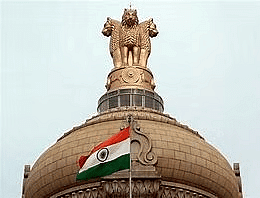
Why in news?
The Union Cabinet, chaired by PM Narendra Modi, approved the National Forensic Infrastructure Enhancement Scheme (NFIES).
About National Forensic Infrastructure Enhancement Scheme (NFlES)
NFIES aims to strengthen national forensic infrastructure, expand NFSU’s reach, and establish CFSLs to meet growing forensic demands. It aligns with India’s goals of enhancing forensic capabilities and securing robust criminal justice outcomes.
Key Components of NFlES:
- Campuses of NFSU: Establishing campuses of the National Forensic Sciences University (NFSU) across India.
- Central Forensic Science Laboratories (CFSLs): Setting up new CFSLs nationwide.
- Delhi Campus Enhancement: Upgrading infrastructure at the Delhi Campus of NFSU.
Financial outlay:
Rs. 2254.43 crore for 2024-25 to 2028-29, funded by the Ministry of Home Affairs.
Objectives:
- Enhancing the criminal justice system with timely and scientific forensic examinations.
- Addressing the increased workload due to new criminal laws requiring forensic investigation for serious offences.
- Mitigating the shortage of trained forensic professionals in Forensic Science Laboratories (FSLs).
Impact and Benefits
- Improved Efficiency: Ensuring high-quality forensic examinations for efficient criminal justice processes.
- Technology Integration: Leveraging advancements to handle evolving crime methods effectively.
- Capacity Building: Training more forensic professionals to reduce case backlogs and support a high conviction rate exceeding 90%.
PYQ:
[2017] ‘Recognition of Prior Learning Scheme’ is sometimes mentioned in the news with reference to:
(a) Certifying the skills acquired by construction workers through traditional channels.
(b) Enrolling the persons in Universities for distance learning programmes.
(c) Reserving some skilled jobs to rural and urban poor in some public sector undertakings.
(d) Certifying the skills acquired by trainees under the National Skill Development Programme.
GS3/Environment
Create the space for governance with a green heart
Source: The Hindu
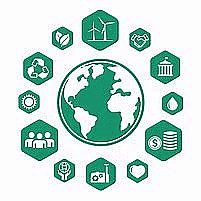
Why in news?
As a new term begins for the government and the Lok Sabha, it must prioritize environmental concerns. No government has ever truly prioritized the environment, and the last one, focused on development, actively harmed it.
The Indian Himalayan Region (IHR) encompasses the portion of the Himalayas located within India, extending across thirteen Indian States and Union Territories, including Ladakh, Jammu and Kashmir, Himachal Pradesh, Uttarakhand, Sikkim, West Bengal, Manipur, Meghalaya, Mizoram, Nagaland, Tripura, Assam, and Arunachal Pradesh.
Problems Associated with Lack of Political Will on Environmental Governance
- Neglect of Climate Change Mitigation and Adaptation: Inadequate actions to reduce carbon emissions and build climate resilience. And failure to address the remediation aspects of climate change, such as food security and disaster preparedness.
- Degradation of Forest Cover: Significant decline in both quantitative and qualitative forest cover. Recent legislation weakening forest protections, leading to further environmental damage.
- Deteriorating Urban Environments: Severe air pollution and water scarcity in major cities, adversely affect public health. Poor sewage treatment infrastructure, resulting in heavily polluted rivers and water bodies.
- Environmental Degradation in the Himalayas: Rapid glacial melting and altered weather patterns threatening water and food security. Government inaction on local environmental protests and concerns highlights a disconnect between policy and grassroots needs.
- Ineffective Environmental Impact Assessments (EIA): EIAs are reduced to mere formalities, failing to prevent environmentally harmful projects. Dilution of EIA regulations and lack of meaningful stakeholder engagement, compromising environmental protection efforts.
How This Can Be Restored?
- Enhanced Environmental Impact Assessments (EIA): Strengthen EIA mechanisms, elevate them to statutory status, and ensure they are thorough and transparent to prevent projects from causing environmental harm.
- Restoration Projects: Initiate large-scale conservation and restoration projects for glaciers, forests, and rivers in the Himalayan region.
- Community Involvement: Actively involve local communities and stakeholders in decision-making processes to ensure their concerns and knowledge are integrated into policy-making.
- Strict Enforcement of Environmental Laws: Improve enforcement of existing environmental regulations and increase penalties for violations to deter harmful activities.
- Sustainable Development Policies: Develop and implement policies that balance development with environmental conservation, ensuring long-term ecological health and resilience.
- Revised Legislation: Reassess and amend legislation like the Forest (Conservation) Amendment Bill, 2023, to provide stronger protections for natural habitats.
- Resilience Building: Invest in infrastructure and programs aimed at enhancing resilience against climate change impacts, such as improved water management systems and disaster preparedness plans.
Government steps taken:
National Mission for Sustaining the Himalayan Ecosystem (NMSHE)
- was launched as part of India's National Action Plan on Climate Change to holistically address the vulnerabilities of the Himalayan ecosystem.
- Under NMSHE
- the government has developed a common framework and methodology for climate vulnerability and risk assessment across 12 Himalayan states.
- The government has also established the "G.B. Pant Institute of Himalayan Environment & Development"
- to focus on sustainable development and environmental conservation in the Indian Himalayan Region.
Conclusion:
To achieve Sustainable Development Goal 13 (Climate Action), India must enhance environmental governance, prioritize climate resilience, and enforce robust conservation policies to protect the Indian Himalayan Region and its ecosystems.
Mains PYQ:
Climate change is a global problem. How India will be affected by climate change? How Himalayan and coastal states of India will be affected by climate change? (15) (UPSC IAS/2017)
GS-III/Economy
Viability Gap Funding (VGF) Scheme for Offshore Wind Energy Projects
Source: Deccan Herald
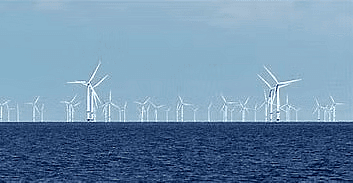
Why in news?
The Union Cabinet, chaired by the PM, approved the Viability Gap Funding (VGF) scheme for offshore wind energy projects.
Back2Basics: Viability Gap Funding (VGF) Scheme
The VGF scheme is a financial tool to support infrastructure projects that are economically justified but face financial viability challenges. It was launched in 2004 to address the gap between economically viable infrastructure projects and their financial feasibility under traditional financing models.
Administration
- Administered by the Ministry of Finance, Government of India, the scheme operates as a Plan Scheme with annual budget allocations.
Features
- Capital Subsidy: VGF provides a grant (capital subsidy) to infrastructure projects to make them financially attractive for private sector participation. This subsidy helps cover part of the cost that private investors would find economically unviable.
- Project Eligibility: Projects eligible for VGF are typically selected through competitive bidding processes. They must demonstrate economic justification but face challenges in attracting private investment solely on commercial terms.
- Disbursement Timing: The VGF grant is disbursed during the construction phase of the project. However, disbursement is conditional upon the private sector developer making the required equity contribution to the project.
- Budgetary Allocation: Funds for VGF are allocated from the government's budget. Sometimes, contributions may also come from the statutory authority that owns the project asset.
Limitations
- Additional financial assistance beyond the VGF amount is capped at 20% of the total project cost. This additional support can be provided by the sponsoring Ministry, State Government, or the statutory entity involved.
Benefits
- Encouraging Investment: By reducing the financial risks associated with infrastructure projects, VGF encourages private sector participation, leading to faster project implementation and improved service delivery.
- Infrastructure Development: The scheme supports the development of critical infrastructure such as transportation (roads, railways, airports), energy (power generation, transmission), and public utilities.
About VGF Scheme for Offshore Wind Energy Projects
The VGF scheme aligns with the National Offshore Wind Energy Policy (2015) to harness India's offshore wind potential. It aims to reduce power costs from offshore wind projects, making them viable for DISCOMs through government support. It seeks installation and commissioning of 1 GW of offshore wind energy projects (500 MW each off the coast of Gujarat and Tamil Nadu).
Functionaries
- Private Developers will execute projects via transparent bidding.
- Power Grid Corporation of India Ltd (PGCIL) will build power evacuation infrastructure.
Advantages of Offshore Wind Energy
- Offshore wind offers higher reliability, lower storage requirements, and greater employment potential than onshore wind and solar.
- The development will attract investments, build indigenous manufacturing capabilities, and foster technology advancements.
Environmental and Economic implications
- 1 GW projects will generate 3.72 billion units annually, reducing CO2 emissions by 2.98 million tons per year for 25 years.
- Expected to kickstart India's offshore wind sector, supporting initial development of 37 GW capacity with an investment of Rs. 4,50,000 crore.
- Creates an ecosystem for ocean-based economic activities, contributing to India's energy transition goals.
PYQ
[2016] Give an account of the current status and the targets to be achieved pertaining to renewable energy sources in the country. Discuss in brief the importance of National Programme on Light Emitting Diodes (LEDs).
GS3/Science and Technology
Nuclear Study provides major update on Plutonium Isotope Fission
Source: The Hindu
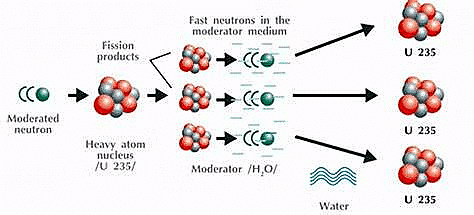
Why in news?
Recently a study was conducted by the US. This study holds significance for design updates in India’s second stage of its nuclear power programme.
India’s Progress in Nuclear Energy
On March 4, India advanced to the second stage of its nuclear power programme by beginning the core-loading process of the Prototype Fast Breeder Reactor (PFBR) at the Madras Atomic Power Station in Kalpakkam.
India’s 3-stage Nuclear Power Program
Stage 1
- Relies on pressurized heavy water reactors (PHWRs) using natural uranium as fuel.
- Initiated in the 1950s; Operational since the 1960s
Stage 2
- Focuses on developing fast breeder reactors (FBRs) using plutonium-239 produced in Stage 1.
- Initiated in the 1970s; Development phase
Stage 3
- Involves the development of thorium-based reactors utilizing India’s significant thorium reserves.
- Initiated in the late 1980s/early 1990s; Research & Development phase
What is Prompt Fission Neutron Spectrum (PFNS)?
- Definition: PFNS refers to neutrons emitted right after a Pu-240 nucleus captures a neutron but before it reaches a stable state.
- Previous Studies: To date, only one study has investigated PFNS for Pu-240-induced fission at 0.85 mega-electron-volt (MeV). Recently, researchers in the U.S. conducted a second study with neutrons of higher energy than 0.85 MeV.
- New Findings: The findings reveal significant differences between predicted and measured PFNS, aiding reactor designers and nuclear medicine practitioners.
About Plutonium-240 and its Fission
Neutron Capture
- When a Pu-239 nucleus captures a neutron, it can either undergo fission or become Pu-240.
- Pu-240 is common in nuclear reactors and nuclear weapon test fallout.
Pu-240 Behavior
- Pu-240 capturing a neutron typically turns into Pu-241.
- If Pu-240 undergoes fission, there’s uncertainty about the energy of its fission products. Current models use complex calculations to estimate this output.
Relevance of PFNS Study to India’s PFBR
- PFBR Use: The PFBR uses plutonium from CANDU (Canada Deuterium Uranium) reactor spent fuel, which contains Pu-240. Reprocessed PFBR spent fuel will also contain Pu-240.
- Importance of New Data: New data on Pu-240 behaviour is essential for improving reactor efficiency and safety.
Production and Characteristics of Pu-240
- Creation of Pu-239: Pu-239 is created when U-238 is exposed to neutrons in a reactor. As Pu-239 captures neutrons, it turns into Pu-240, which builds up over time.
- Spontaneous Fission: Pu-240 undergoes spontaneous fission, emitting alpha particles, and is considered a contaminant in weapons-grade plutonium, where its composition is kept below 7%.
- Reactor-Grade Plutonium: Plutonium with more than 19% Pu-240 is classified as reactor-grade.
Experimental Findings on PFNS
- Research at LANSCE: Researchers at Los Alamos Neutron Science Centre (LANSCE) conducted tests by bombarding a pure Pu-240 sample with neutrons of 0.01-800 MeV energy.
- Detection Setup: The setup included liquid scintillators to detect emitted particles, using a small Pu-240 sample to minimize alpha particle emission.
- Measurement Focus: They measured the energies of neutrons and other fission products, focusing on neutron-induced fission data.
PYQ
[2016] India is an important member of the ‘International Thermonuclear Experimental Reactor’. If this experiment succeeds, what is the immediate advantage for India?
(a) It can use thorium in place of uranium for power generation
(b) It can attain a global role in satellite navigation
(c) It can drastically improve the efficiency of its fission reactors in power generation
(d) It can build fusion reactors for power generation
[2011] The function of heavy water in a nuclear reactor is to:
(a) Slow down the speed of neutrons
(b) Increase the speed of neutrons
(c) Cool down the reactor
(d) Stop the nuclear reaction
GS3/Science and Technology
ISRO’s Reusable Launch Vehicle ‘Pushpak’
Source: Indian Express

Why in News?
ISRO completed the third Reusable Launch Vehicle (RLV) Landing Experiment (LEX) of its winged vehicle ‘Pushpak’, at the Aeronautical Test Range (ATR) in Chitradurga, Karnataka.
What is a RLV and How is it Different from Other Launch Vehicles?
- Launch vehicles usually have three or four stages, whereas ISRO's RLV has only two stages.
- ISRO's RLV aims to reduce launch costs significantly, by as much as 80%.
- RLVs like 'Pushpak' have the potential to support advanced technologies such as hypersonic flight and autonomous landing.
What is the Significance of RLVs?
- RLVs like 'Pushpak' can bring down launch costs by a large margin, making space missions more affordable.
- They form the basis for exploring advanced technologies like hypersonic flight and autonomous landing.
What is the History of ISRO’s RLV Missions?
- In 2010, ISRO began developing a winged reusable rocket, marking the initial step towards a fully reusable launch vehicle.
- In 2016, the winged vehicle successfully flew at hypersonic speed and landed at a predetermined site.
- ISRO has been testing various related technologies over the years, with autonomous landing being successfully demonstrated in 2023.
What are the RLV LEX Missions?
- The RLV LEX missions involve testing the autonomous landing capability of the RLV under challenging conditions.
- These missions simulate high-speed landing scenarios to validate critical technologies for RLV development.
GS2/Polity
18th Lok Sabha session - Oath taking in Lok Sabha
Source: The Hindu
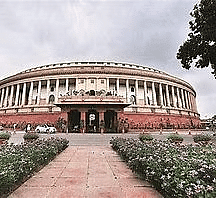
Why in news?
The commencement of the 18th Lok Sabha session marks the initiation of parliamentary activities. Newly elected members are mandated to take the oath of Members of Parliament (MP) as prescribed in the Constitution.
- Bhartruhari Mahtab, who has been elected for the seventh consecutive term from Cuttack, Odisha, will be the first to swear in as a Lok Sabha MP at Rashtrapati Bhavan in the presence of President Droupadi Murmu.
- To oversee the proceedings until the election of a new Speaker, the President has designated him as the Speaker (pro tem) under Article 95(1) of the Constitution. Mahtab will preside over the House during the oath-taking ceremony of his fellow MPs.
- The tenure of a Lok Sabha MP spans five years from the moment the Election Commission of India (ECI) announces the results in accordance with Section 73 of the Representation of the People Act, 1951. Elected representatives are entitled to various privileges from this juncture.
- For instance, they begin receiving their remuneration and perks from the date of the ECI notification. Furthermore, the initiation of their term implies that if MPs switch party affiliations, their political party holds the authority to petition the Speaker for their disqualification from Parliament under the anti-defection law.
About
The parliamentary oath is outlined in the third schedule of the Constitution. Through this, members pledge to uphold the Constitution of India, maintain the sovereignty and integrity of the nation, and dutifully fulfill their responsibilities.
Significance of the Parliamentary Oath Post Commencement of an MP's Tenure
- Securing victory in the election and commencing the term does not automatically grant an MP the right to engage in House proceedings.
- An MP must undertake an oath or affirmation, as stipulated by the Constitution (Article 99), to partake in debates and voting within the Lok Sabha.
- Violating this mandate attracts a financial penalty of Rs 500 (Article 104) if an individual participates or votes without taking the oath.
- An exception is made for ministers who are yet to be elected to Parliament; they can engage in House proceedings without voting for a maximum of six months while they secure a seat in either Lok Sabha or Rajya Sabha.
Evolution of the Oath through the Years
- The initial draft Constitution, formulated by the committee chaired by Dr. B.R. Ambedkar, did not include references to God in any oaths. It stressed a solemn and sincere commitment to uphold the Constitution.
- During the deliberations of the Constituent Assembly, members such as K.T. Shah and Mahavir Tyagi proposed amendments to introduce God in the President's oath.
- They contended that this inclusion would offer divine endorsement for believers while permitting non-believers to solemnly affirm. Despite disagreements, Ambedkar endorsed the amendments, acknowledging the importance of invoking God for certain individuals.
- The most recent alteration to the oath was with the Constitution (Sixteenth Amendment) Act, 1963. This amendment added the obligation to uphold India's sovereignty and integrity, following recommendations from the National Integration Council.
Procedure
- Prior to taking the oath or affirmation, MPs must furnish their election certificate to the Lok Sabha personnel.
- This requisite was introduced subsequent to a 1957 incident where an individual with mental health concerns impersonated an MP and took the oath.
- Subsequently, MPs can undertake their oath or affirmation in English or any of the 22 languages specified in the Constitution.
- Approximately half of the MPs opt for Hindi or English for the oath, with Sanskrit gaining popularity in recent times.
- MPs are obligated to use the name on their election certificate and adhere strictly to the oath's text. Deviations, such as including suffixes or additional phrases, are not recorded, and MPs may be requested to reiterate the oath.
- While the choice between oath and affirmation is personal, 87% of MPs in the previous Lok Sabha swore by God, while the remaining 13% affirmed allegiance to the Constitution. Some MPs alternate between invoking God and affirming across different terms.
Can Incarcerated MPs Undertake the Oath?
As per the Constitution, if an MP is absent from Parliament for 60 days, their seat can be deemed vacant. Courts have utilized this provision to enable incarcerated MPs to take the oath in Parliament.
|
38 videos|5293 docs|1118 tests
|
FAQs on UPSC Daily Current Affairs- 24th June 2024 - Current Affairs & Hindu Analysis: Daily, Weekly & Monthly
| 1. What are the powers and functions of the GST Council? |  |
| 2. What are the safety challenges faced by Indian Railways? |  |
| 3. Why is India among a select few countries that have not conducted the Census? |  |
| 4. What is the purpose of the Viability Gap Funding (VGF) Scheme for Offshore Wind Energy Projects? |  |
| 5. What is the significance of the Cabinet approving the Central Sector Scheme “National Forensic Infrastructure Enhancement Scheme” (NFIES)? |  |





















